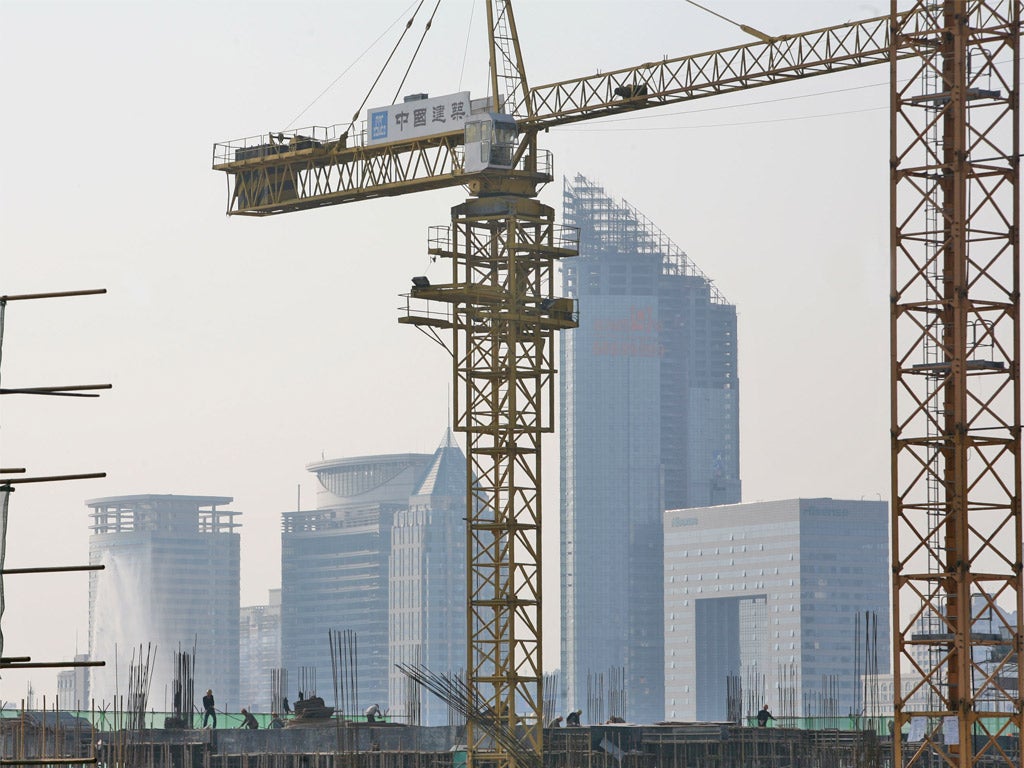Skyscrapers may point to economic decline
The unhealthy link between the world's tallest buildings and financial crises. By Tom Bawden

Your support helps us to tell the story
From reproductive rights to climate change to Big Tech, The Independent is on the ground when the story is developing. Whether it's investigating the financials of Elon Musk's pro-Trump PAC or producing our latest documentary, 'The A Word', which shines a light on the American women fighting for reproductive rights, we know how important it is to parse out the facts from the messaging.
At such a critical moment in US history, we need reporters on the ground. Your donation allows us to keep sending journalists to speak to both sides of the story.
The Independent is trusted by Americans across the entire political spectrum. And unlike many other quality news outlets, we choose not to lock Americans out of our reporting and analysis with paywalls. We believe quality journalism should be available to everyone, paid for by those who can afford it.
Your support makes all the difference.You might think a boom in skyscraper construction signals all is well with the economy – but you would be wrong. Patterns of tall-building construction do appear to be a reliable barometer of what's in store for the economy. But the crowning of a new skyscraper king typically heralds a recession.
This is the conclusion of an authoritative new report, which will fuel concerns that the economic juggernauts of China and India are, at the very least, running out of steam. From the first skyscraper in New York in 1870 to the completion of the current tallest building in Dubai in 2010, the story has been the same: the construction of the world's tallest building is followed by an economic crash.
There is an "unhealthy correlation between construction of the next world's tallest building and an impending financial crisis", according to the report, by Barclays Capital, which examines the case of 18 "world's tallest buildings" in the past 150 years and links them to 10 recessions.
The Empire State Building was completed in New York in 1931 as the Great Depression got under way, while the world's current tallest building – the 2,717ft, 163-storey Burj Khalifa skyscraper – was built in Dubai in 2010 as the emirate came close to economic meltdown.
The 1,483ft, 88-storey Petronas Towers were completed in Kuala Lumpur in 1998, only for a region-wide economic crisis to follow, along with the collapse of Asian currencies.
As Andrew Lawrence, the author of the report, explains, the pattern is typically the same. Buoyed by an economic boom and the availability of cheap credit, property developers are emboldened to take on increasingly ambitious skyscrapers.
By the time these mega-structures are finished a few years later, the world is generally a very different place – the economic bubble is bursting, reality has hit, the banks are nursing losses on their loans and credit is much harder to come by. But the completed building provides a potent symbol of the excesses of recent years.
"Skyscrapers are perhaps the ultimate architecture of capitalism," Mr Lawrence says.
"Often the world's tallest buildings are simply the edifice of a broader skyscraper building boom, reflecting a widespread misallocation of capital and an impending economic correction."
The report makes no mention of London, but that doesn't mean the UK is off the hook. Its skyscrapers may not be in the same league as other places but the pattern of architectural exuberance preceding an economic fall is just as plain.
Mr Lawrence points to the completion in 1980 of Tower 42 at 25 Old Broad Street in London's financial district, just ahead of the early 1980s recession. That 600ft, 47-storey building was Britain's tallest until 1991, when One Canada Square was completed in Canary Wharf. That 800ft, 50-floor building preceded the recession of the early 1990s.
One Canada Square is set to lose its crown later this year when the "Shard" is completed in the London Bridge area of the capital. The 1,017ft, 72-storey Shard had been a source of pride for Londoners because it will be the EU's tallest building. But after this report, they may think again.
GREAT RECESSION 2007-2010
The global downturn, whose effects we are still feeling, began just as the Burj Khalifa (not completed until 2010) overtook the Taipei 101 as the world's tallest building.
dot-com bubble
2000-2003
After five years of spectacular growth, the internet stock bubble burst, very messily. Construction of the Taipei 101 had begun in 1999.
asia economic
crisis
1997-1998
Region-wide economic crisis with the collapse of the Thai baht and a widespread collapse in Asian currencies.
recession
Early 1980s
The start of the Thatcher years saw a new tallest building for London – and 17 per cent interest rates, 20 per cent inflation and 10 per cent unemployment.
worldwide economic crisis
1972-1975
US currency speculation, the collapse of the Bretton Woods system and Opec price rises caused a global economic crisis.
great depression
1929-1933
Record-breaking skyscrapers kept popping up in New York (the Chrysler Building in 1930, the Empire State Building in 1931) as the Great Depression was setting in.
heights of panic
Join our commenting forum
Join thought-provoking conversations, follow other Independent readers and see their replies
Comments